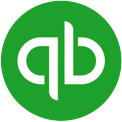Types of Pay Periods
How do pay periods work? What is a payroll schedule? How often will my employees get paid? These are all questions that we will get into below.
There are various types of pay periods, but the most common are weekly, biweekly, monthly, and semimonthly. Each type will have a different number of payroll periods in a year. The number of pay periods that will work for your business will depend on the types of employees you’re paying and whether or not they receive overtime. Let’s look at each type:
- Weekly: An employee who is paid on a weekly basis will receive 52 paycheques a year. Hourly employees and part-time employees are typically paid weekly. A weekly pay period is ideal for employees who tend to work overtime or whose work schedules change on a weekly basis. With this pay period, employees will record their hours for the week and submit a timesheet at the end of the workweek. They will then be paid in the following week because it gives the payroll clerk time to make any adjustments. Some employees enjoy a weekly pay period because it’s a more consistent cash flow.
- Biweekly: An employee who is paid biweekly will typically receive 26 paycheques a year. Employees paid biweekly can either be hourly or salaried. Biweekly pay periods are more cost effective than weekly payroll, but it can be confusing to process payroll for months that have three pay periods.
- Monthly: An employee who is paid monthly will receive 12 paycheques a year. Monthly pay periods typically only work for salaried employees. Employees paid on a monthly basis are usually paid on either the first or last day of the month. Monthly payroll is the most cost effective of the bunch and is the easiest to calculate. However, some employees don’t like monthly payroll because it’s a less frequent cash flow.
- Semimonthly: An employee who is paid semimonthly will receive 24 paycheques a year. Employees paid semimonthly will typically be paid on the first and 15th of each month. Semimonthly payroll works best for salaried employees who have a consistent schedule. Semimonthly payroll is easy for both the employer and the employee. It’s easy for the employer to calculate and the employee receives a more frequent cash flow. However, the semimonthly pay period can be confusing for hourly workers if overtime needs to be applied.
The difference between semimonthly and biweekly payroll can be confusing. A semimonthly payroll schedule happens twice a month, no more, no less. A biweekly payroll schedule happens every two weeks. Semimonthly has 24 pay periods in a year, while biweekly has 26 pay periods in a year.
Regardless of the pay period you choose, it’s important to know how to reconcile payroll so you can monitor your business expenses and ensure your employees are paid correctly for their time.





